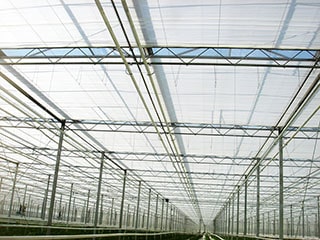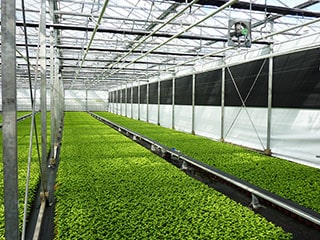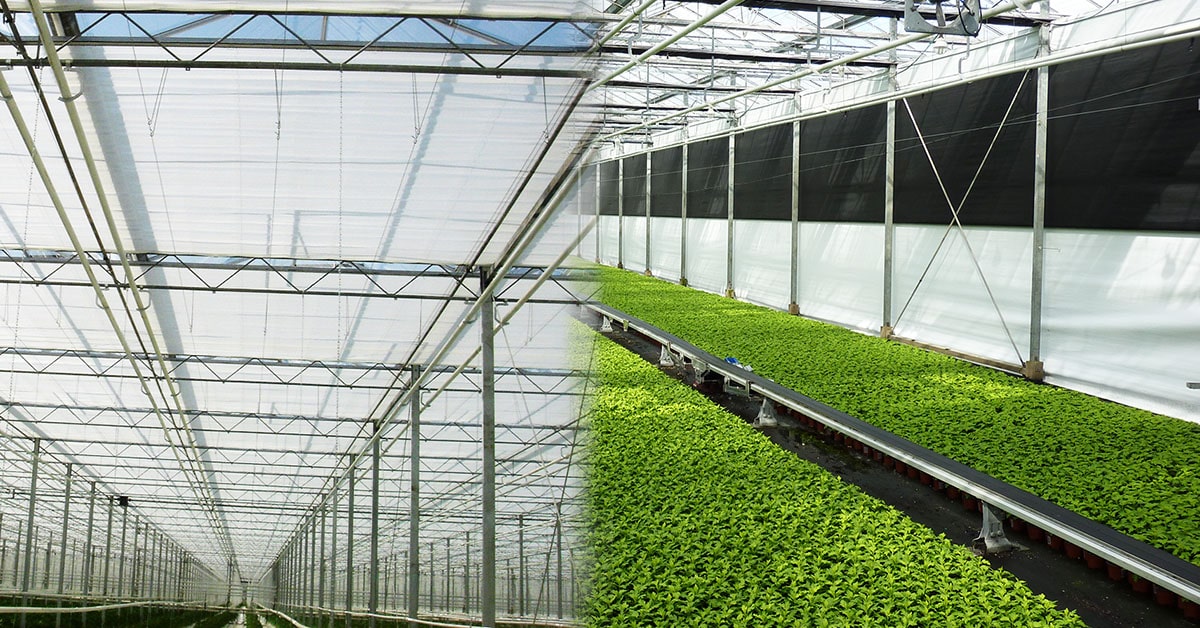Screening or shading or thermal screens are the systems which provide certain benefits to the greenhouse when it comes to energy savings and also screening from the Sun’s radiation.

Screening systems are usually divided into two categories:
- Horizontal screens;
- Vertical screens or wall screening;
Both of them are constructed in different ways depending on their main purpose.
Horizontal screens can be divided into Open and Closed screens, depending on how the screens mechanism is constructed. Open screens provide only the protection from the Sun’s radiation. Closed screens provide both the protection from the Sun, and also the energy savings feature.
When it comes to growing tomatoes in a glasshouse, a horizontal screen is always used. But its purpose is mainly to help with energy management, it provides energy savings. It’s a thermal screen with only 10-15 % shading capability. You can easily notice that the cloth of this screens has no aluminum strip within its material. The reason for this is that tomato plants are very needy of sunlight, especially in their early stage of development, during a young plant phase. And also later during the ripping and production of tomatoes. So we do not like to put too much shade on top of tomatoes. The more light the better.
There are cases where a second horizontal screen is used on tomatoes. It is usually a thermal, closed screen with 66% shade. But this is actively used only at night time for energy savings or in the day time only during the very very warm weather, to protect the top of the plants from heat damage.

Wall screens are usually with a 100% shade (a blackout cloth) or a 10-15% shade. The choice is up to a grower, whether he likes the one or the other.
In plant or cut flower production greenhouses, only much higher shading screens are used, with shading percentage of 45% up to 75% shade.
In some countries, due to local regulations, a blackout screen needs to be used as a horizontal screen during the night, in greenhouses with artificial light systems. This is to prevent the light pollution of the neighboring natural habitats. Some plants also need the blackout screen in order to control their growth.



0 Comments